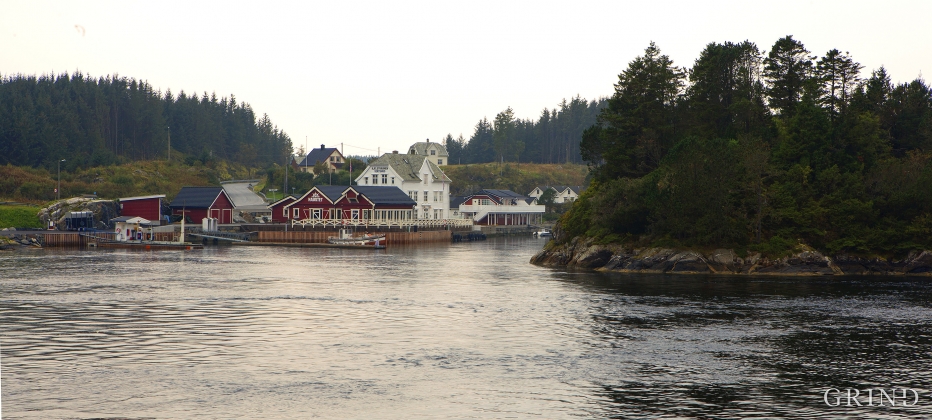Published: 16.02.2013 | Author: Nils Georg Brekke, Aud Karin Skagen
Kjelstraumen is mentioned in the time of king Sverre. The Birkebeiner men caught up with two of the Baglar ships on the way to Bergen in 1260. It came to blows in Kjelstraumen. One of the ships hit a rock and became an easy target for the earl. The other ship got away to Bergen and gave notice that the enemy was close. History also tells us that there has been a falconry centre in Kjelstraumen in the Middle Ages. The hunting falcon had great value, it was presented as a gift to kings and earls.
The first lodging houses mentioned in Hordaland is Salhus north of Bergen and Kvalvågen in Austrheim. But in 1610 the guesthouse locality was moved to Kjelstraumen, which was church estate. In 1610 the Lindås priest Hans Nilssøn Hess, applied to the king for confirmation, after the law officer at Bergenhus, Lauritz Kruse, had granted permission to erect a house in Kjelstraumen for the benefit and help for travellers.
In Norrigis Bescrifuelse (Description of Norway) Peder Claussøn Friis tells us that there is a hidden rock in Kjelstraumen. In 1632 seven sloops from North Norway hit this rock and sank. In 1877 it was dynamited away.
Financially the guesthouse location must have been a boon. When the first poor law was put into practice for old Lindås parish in 1756, there was only one man in Lindås who was counted among the distinguished: the landlord in Kjelstraumen, Ole Lagesen. He was obliged to contribute Rdl. (Riksdaler – the currency at the time) to the poor commission. In 1799 Christopher Kahrs bought the guesthouse. His son Christ Kahrs, obtained a certificate as tradesman in 1812, and it was a fixed court location for many years, spring and autumn. Here was also steamship port, and the first post office in Austrheim was opened here in 1870.
The transport exchange in kjelstraumen
On 12 August 1733 a royal party was on its way south; Christian VI on a tour of Norway. They dined at the vicarage in Eivindvik, and in the afternoon they travelled to Kjelstraumen.
Here they were given new oarsmen. It was surely an honour for the farmers being allowed to transport the royal party, but it was not always met with enthusiasm. The farmers in the area had an obligation to provide transport. From old times there was a so-called “Tilsigelsesskifte”(change of transport on demand) here; state employees and other persons in public service had the right to demand transport in order to get to the next transport exchange. The person providing the transport was obliged to find suitable transport. Smallholders and farmers had to provide boats and oarsmen on “Tilsigelse”. The duty to provide transport was a struggle and the rewards meagre.
In his diary Fredrik Meltzer recounts a trip with the men from Bergen on their way to Eidsvoll – to participate in the National meeting to found Norway’s constitution in 1814;
“March 28th: started from the Fløtmandsbryggen in Dreggen in court agent Janson’s large passenger-boat with 2 servants, 10 oarsmen and a mate. We are 5 travellers: Motzfeldt, Christie, Rein, Rolfsen, who are representatives of Bergen town to the National Meeting at Eidsvold. In addition am I. Arrived at Alverstrømmen at 3 p.m. Had tea and strolled to the Reme property, to Mrs. Kahrs for supper, and went to bed at 10.30…”
The following morning they had breakfast at 3.30 and travelled north. They probably exchanged transport in Kjelstraumen and arrived later in the day at Skjerjehamn, where they stayed overnight, before setting off into Sognefjorden the following day.
“Tilsigelsesskftet” in Kjelstraumen was in operation until 1924.




